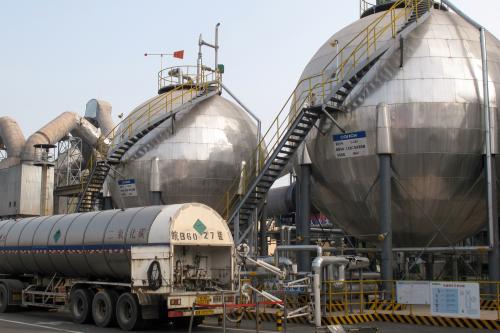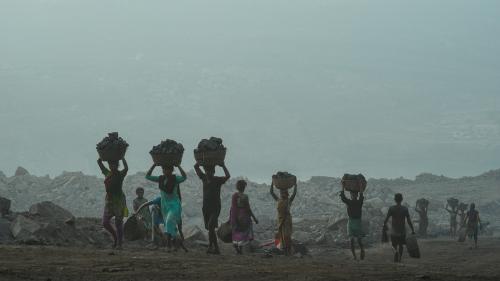I spent the last four days in Delhi, India, which is experiencing some of the worst air pollution it has ever seen. Very fine particulate matter, known as PM2.5—for the particle size in microns—is the most dangerous part from a health perspective, able to penetrate deep into the lungs, and even move into the bloodstream. The World Health Organization guideline for PM2.5 is 25 micrograms per cubic meter over the short term. Delhi has been experiencing levels over 1000 micrograms. Delhi now reigns as the world’s most polluted city, a title no city wants to win.
Pollution at this level is impossible to ignore. The acrid smog burned my eyes the whole time I was there, visibility was no more than a city block, and the sun was a pale orange disk in the sky. In recent days, United Airlines cancelled flights to and from Delhi due to concerns about poor air quality. City officials closed schools and are considering a scheme to allow private vehicles to drive in the city only every other day, determined by the odd or even number of their license plates.

The world has seen similar pollution in other cities, most notably Beijing. But the problem in Delhi has different roots than that in Beijing, and is proving more difficult to solve. Beijing’s pollution is primarily due to industrial sources—vehicles, construction, and power plants, both in the city and in nearby provinces. These sources are an important part of Delhi’s problem too, but burning of crop residues in Punjab and Haryana, dust from the desert in Rajasthan, and even fireworks from the recent Diwali festival add to Delhi’s pollution woes.
On bad air days in China, the central government has the authority to eliminate the most important source of pollutants until air conditions improve, shutting down power plants and construction sites and limiting private car use. Chinese officials have even taken these steps during times of lesser pollution to ensure clear blue skies for important events, including a summit for world leaders and a military parade. Officials are also taking longer-term steps, removing older vehicles from the road and moving from coal-fired power to cleaner burning natural gas.
The political system in India does not allow this tight control of pollution sources.
But the political system in India does not allow this tight control of pollution sources. Indian states are politically independent and resist control from the central government, making the regional nature of air pollution a challenge to address. Delhi’s chief minister is currently struggling with the nearby states of Punjab and Haryana to limit burning in fields, but Punjab’s chief minister is asking the central government for compensation for farmers who avoid burning. A meeting with Haryana’s chief minister hasn’t yet occurred, with both sides blaming the other for the impasse. Farmers are a politically important group and politicians are loathe to upset them. Recently, Aseem Prakash, Nives Dolšak, Thomas Bernauer, and Liam McGrath published an informative article in the Washington Post, further describing the political economy of pollution in Delhi.
There also seems to be less public response and outcry in India than in China, particularly given the greater personal freedom that Indian citizens enjoy. This episode of extreme pollution seems to have gotten more media attention than previous bouts, but in Delhi, the streets were full of people going about their business, with very few air masks in sight. (These do little good anyway for the tiny particles that are the most harmful, but are at least a sign that the public is paying attention.) One hopes that the increased attention will help break down political barriers to dealing with air pollution, but the latest news isn’t particularly promising.



Commentary
A title no city wants to win
Delhi: World’s most polluted city
November 13, 2017